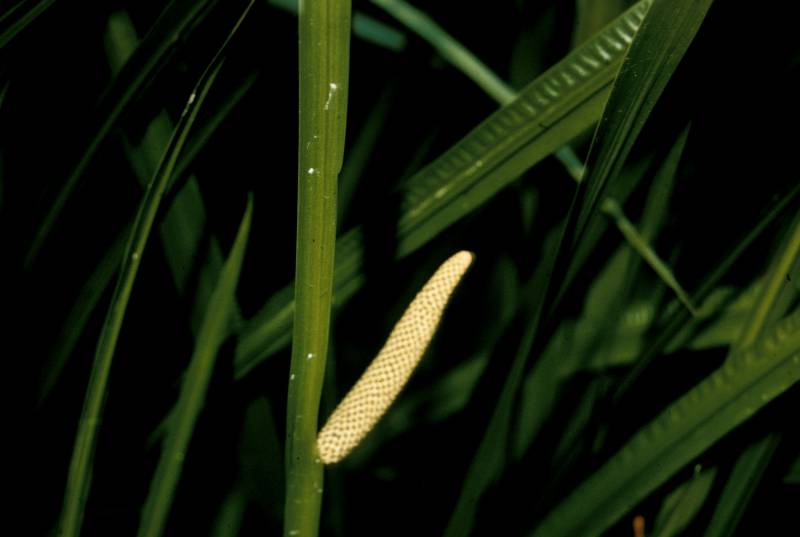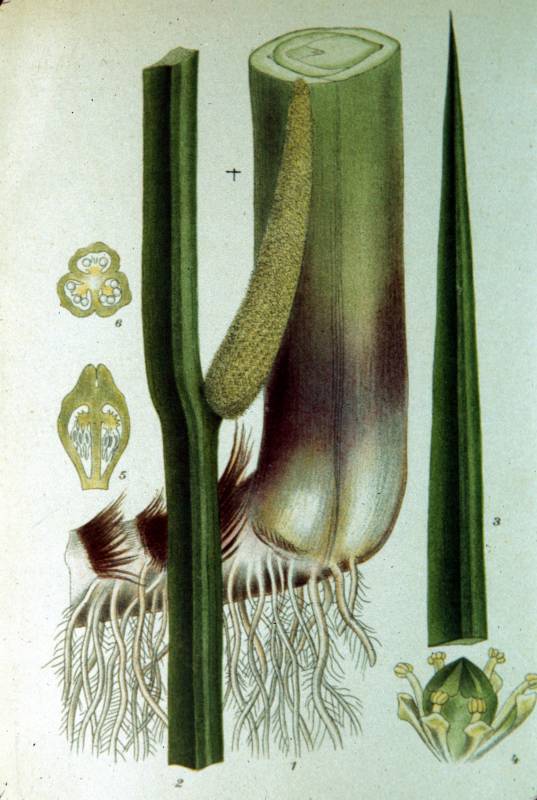Distribution: Occurring in scattered locations on both sides of the Cascades crest in Washington; Washington to California, east to Idaho, also widespread in central and eastern North America.
Habitat: Wetlands, pond shores, and streambanks.
Flowers: May-July
Origin: Introduced from Eurasia
Growth Duration: Perennial
Conservation Status: Not of concern
Pollination: Beetles
Herbaceous perennials; rhizomes branched, creeping horizontally at or near surface; emits distinctive and pleasant odor when bruised or broken.
Leaves bright green, basally white with pink or red, sword-shaped; venation parallel along length of blade, prominent vein 1, slightly off-center; cross section rhomboid; vegetative leaves to 1.75 m, sheathing base 22-66.5 cm or more, distal portion of leaf generally 31-96 cm long and 0.5-2 cm broad, approximately 1.5 times longer than proximal part of leaf, margins occasionally undulate or crisped; sympodial leaf typically 35-169 cm long, usually equal to or slightly shorter than vegetative leaves, sheathing base 16-76 cm long, distal portion 13.5-86 cm long and 0.5-2 cm broad.
Inflorescence a solitary spadix, from 3-angled axis, spadices 5-9 cm long and 5.3-10.8 mm broad during flowering period, 5.5-8.7 cm long and 6-12.6 mm broad after flowering period, nearly cylindric, tapering, apex obtuse; distal sympodial leaf extending beyond spadix; true spathe absent; flowers 2-3 mm; tepals 6, light brown; stamens 6, distinct; anthers yellow, turning inward toward flower center; pollen grains not staining in aniline blue; ovaries 1, green, usually 3-chambered, sessile; stigmas sessile, minute.
Berries, shaped like upside down pyramids, 4-6 mm; seeds usually 6, tan, slenderly oblong to obovate, 3-4 mm; fruits not produced in North America.
Publication: Sp. Pl. 1: 324. 1753.
PNW Herbaria: Specimen records of Acorus calamus in the Consortium of Pacific Northwest Herbaria database
WA Flora Checklist: Acorus calamus checklist entry
OregonFlora: Acorus calamus information
E-Flora BC: Acorus calamus atlas page
CalPhotos: Acorus calamus photos





